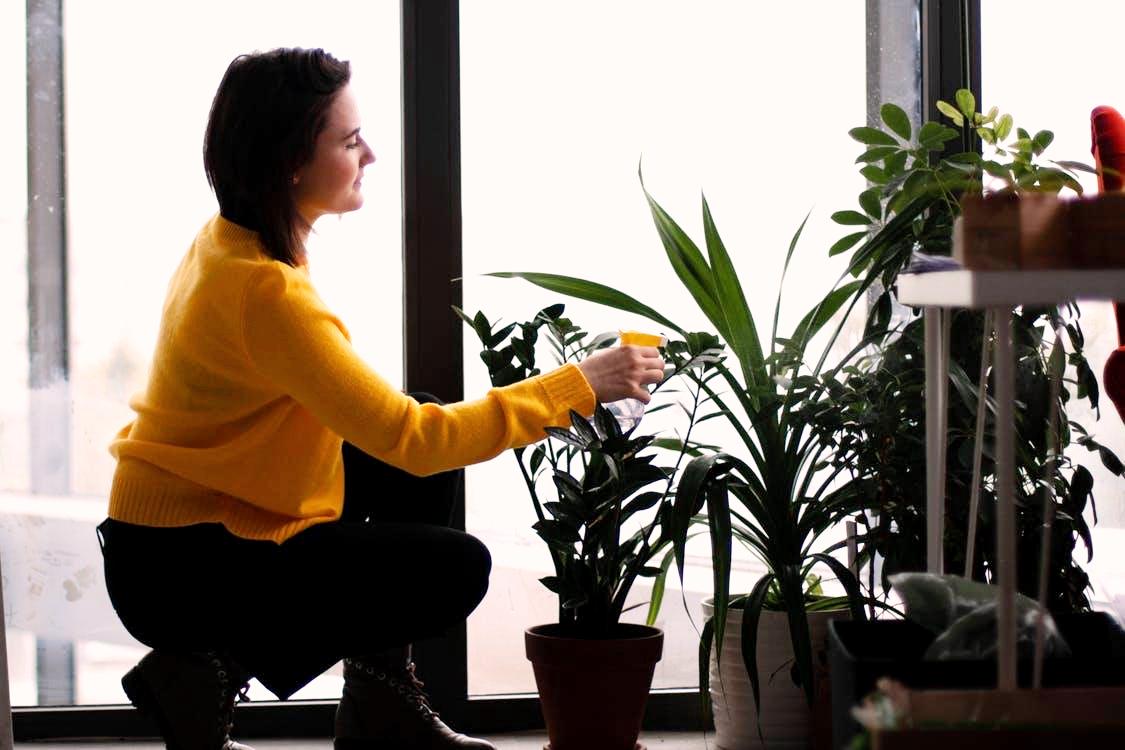
It’s always exciting to bring home a new houseplant, but growing an indoor plant requires time and attention to detail. Unlike outdoor gardens, where you can use a sprinkler to water plants, cordless lawn mower to keep things neat and rely on Mother Nature to help promote growth, indoor plants call for a different approach to care.
Houseplants can die for a variety of reasons, some of which might be a complete mystery if you’ve never owned one before. If you’re a first-time plant owner, be sure to follow these tips to help you keep your plant healthy throughout its life.
Avoid Overwatering
We all know that plants need water to survive and grow, but overwatering can be just as harmful (if not worse) than under watering. Many indoor gardeners water their plants when the soil on top is dry, but you should actually wait until it’s dry an inch or two beneath the surface.
Fortunately, overwatered plants can often be rescued if the problem is noticed early enough. If you suspect that your plant has received too much water, check out this guide to learn more about helping an overwatered plant continue to grow.
Clean Plants Regularly
You may not be aware of the importance of cleaning your plants, but dirty plants receive less energy through photosynthesis and are more likely to have bugs and other pests.
The best way to clean depends on the type of plant, but you’ll generally want to clean off the leaves and get rid of any dust. You can also buy a spray bottle and mist your plant a few times a week to keep it as fresh as possible.

Change Your Approach Each Season
We all settle into a plant care routine at some point, but houseplants actually have very different needs at different times of the year. Plants experience much less growth during the winter, so they’re more prone to being overwatered during the cold season.
Similarly, warmer and longer days in the spring and summer will accelerate your plant growth, so you’ll need to start watering more often. You may also want to start fertilizing your plant in the spring or summer, even if you didn’t do so during the winter months.
Prune Your Plants During Winter
Finally, we recommend removing any old growth from your plants around the end of winter or the beginning of spring. Just as you want to help your outdoor plants grow, you want to do the same for your indoor plants. Leaving too much old growth on during the warmer months can prevent your plant from growing to its fullest potential. The same goes for outdoor plants - that’s why you would use an electric grass trimmer to prune hedges and the like.
Taking care of a houseplant is a delicate and involved process, but anyone can help a plant grow with dedication and the right tips. These ideas will make it easier to avoid some of the most common indoor gardening mistakes and allow you to make your houseplant thrive throughout the year.
Guest post by Rae Steinbach
About the Author
Rae is a graduate of Tufts University with a combined International Relations and Chinese degree. After spending time living and working abroad in China, she returned to NYC to pursue her career and continue curating quality content. Rae is passionate about travel, food, and writing, of course. Worx/RockwellTools
You may also like
A Guide To Choosing Best Plants to Improve Office Environment
15 Best Plants For Your Bedroom That Will Improve Your Sleep [Infographic]
